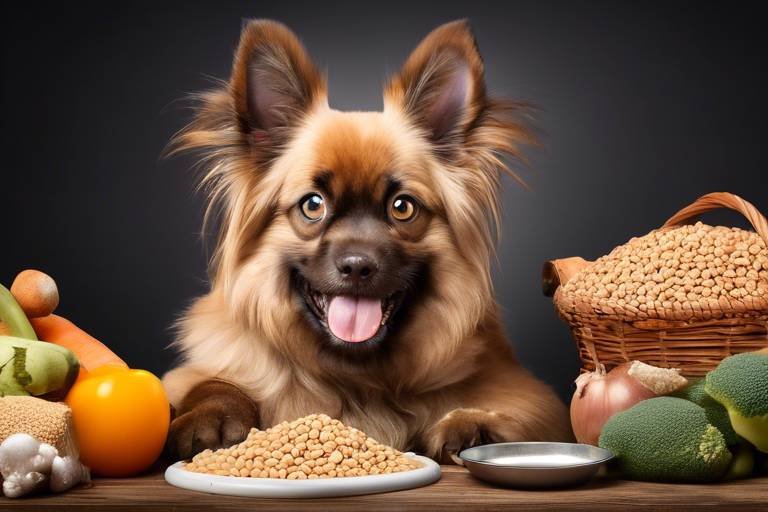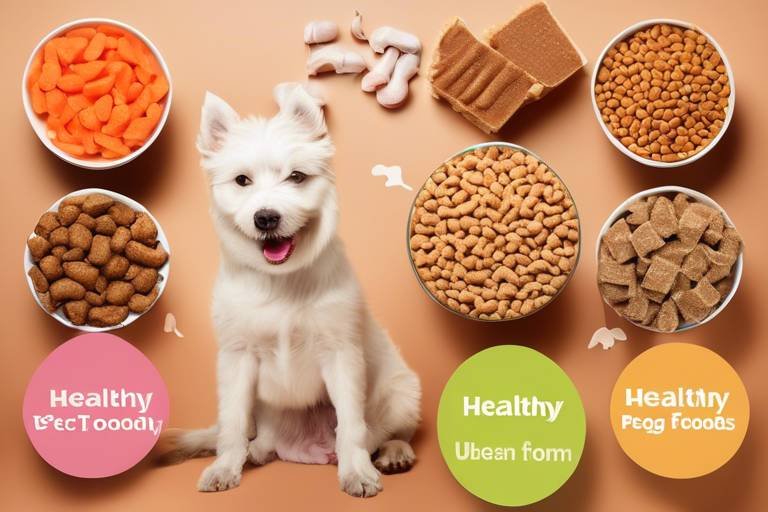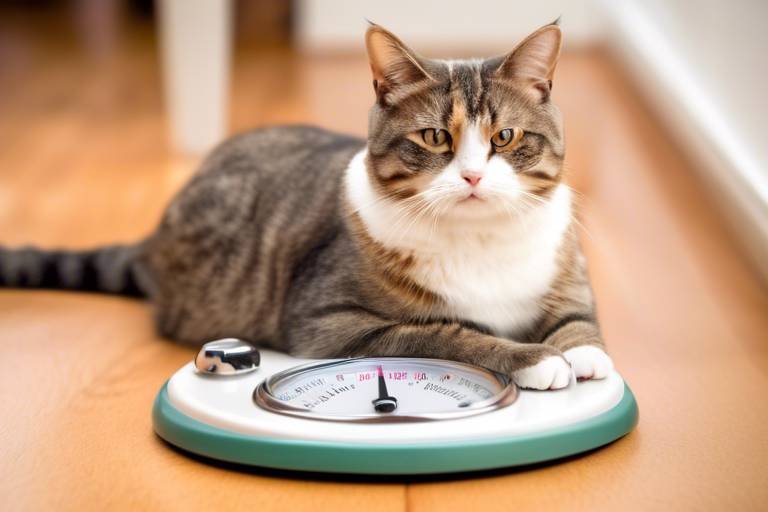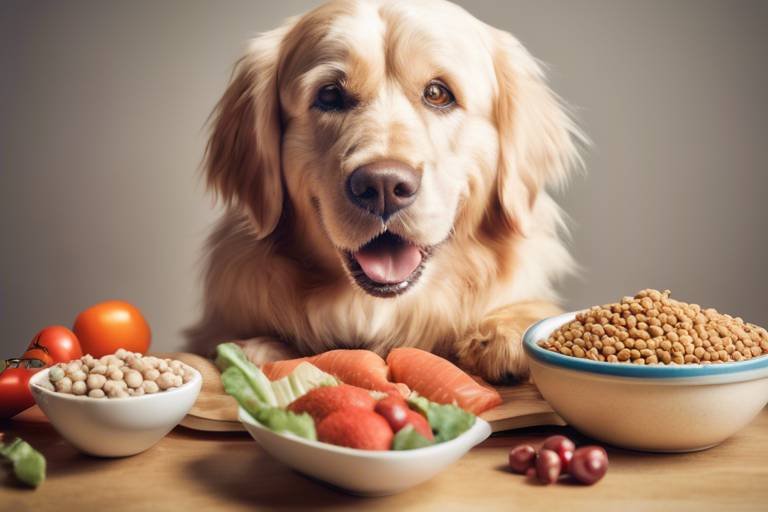How to Help Your Pet with Seasonal Diet Adjustments
As the seasons change, so do the needs of our beloved pets. Just like we might crave a warm soup in winter or a refreshing salad in summer, our furry friends also require seasonal dietary adjustments to ensure they stay healthy and happy year-round. This article explores effective ways to adjust your pet's diet according to seasonal changes, ensuring their health and happiness throughout the year.
Pets have different nutritional requirements as seasons change. Factors such as temperature, activity level, and even mood can influence what your pet needs to thrive. For instance, during the hot summer months, your pet may become more lethargic and require lighter meals that are easier to digest. In contrast, the colder months might call for heartier meals packed with energy to keep them warm. Understanding these shifts is crucial for maintaining your pet's overall well-being.
One of the best ways to enhance your pet's diet is by incorporating fresh, seasonal ingredients. Not only do these ingredients provide essential nutrients, but they also add variety to your pet's meals. Here’s a quick breakdown of some seasonal ingredients that can be beneficial:
| Season | Fruits | Vegetables |
|---|---|---|
| Spring | Strawberries, Blueberries | Peas, Asparagus |
| Summer | Watermelon, Cantaloupe | Cucumbers, Zucchini |
| Fall | Apples, Pears | Pumpkin, Sweet Potatoes |
| Winter | Bananas, Cranberries | Carrots, Kale |
Spring is a time of renewal, and it brings a variety of fresh produce that can boost your pet's energy and health. As the weather warms up, your pet might be more active, so incorporating light and nutritious foods can help keep their energy levels up. Foods like peas and asparagus are not only tasty but also packed with vitamins that support your pet's immune system.
Spring vegetables like peas and asparagus can provide essential nutrients. Peas are a great source of protein and fiber, which aids digestion and keeps your pet feeling full. Asparagus, on the other hand, is rich in vitamins A, C, and K, which are crucial for maintaining healthy skin and fur. Adding these veggies to your pet's meals can make a significant difference in their overall health.
When it comes to fruits, certain options are perfect for spring. Strawberries and blueberries are not only delicious but also loaded with antioxidants that can help combat free radicals in your pet's body. These fruits can be safely included in your pet's diet, either as treats or mixed into their regular meals. Just remember to wash them thoroughly and cut them into small pieces to avoid choking hazards.
As temperatures rise, keeping your pet hydrated becomes even more critical. You might notice that your pet is less active during hot days, which means they may require fewer calories. Opt for lighter meals that are easy to digest, and consider adding water-rich foods like cucumbers and watermelon to their diet. These not only provide hydration but also keep your pet feeling cool and refreshed.
With the onset of cooler weather, pets may need more hearty foods. As the leaves change color, it’s time to transition your pet’s diet to include more nutrient-dense options. Foods like pumpkin and sweet potatoes are excellent choices for fall. They are rich in fiber, which aids digestion and keeps your pet satisfied during those chilly nights.
Winter demands a focus on warmth and energy. The cold weather can make your pet feel sluggish, and they might need more calories to maintain their body temperature. Consider incorporating high-calorie foods into their diet, such as fish oil or fatty meats, to give them the energy they need to stay active. Additionally, warming their meals can make them more appealing during the colder months.
Seasonal adjustments can affect your pet's weight, so it’s essential to monitor their health regularly. Keeping an eye on their weight can help you identify if they are gaining or losing too much. Regular vet check-ups and at-home assessments can ensure your pet remains in optimal health. Remember, a healthy pet is a happy pet, and adjusting their diet according to the seasons is a big part of that!
- How often should I adjust my pet's diet? It's a good idea to reassess your pet's diet at the beginning of each season.
- Can I feed my pet human food? Yes, but make sure the foods are safe for pets and prepared without harmful ingredients.
- What are signs my pet needs a diet change? Look for changes in energy levels, weight, and overall health.

Understanding Seasonal Nutritional Needs
When it comes to our furry friends, understanding their seasonal nutritional needs is key to ensuring they remain healthy and happy throughout the year. Just like humans, pets experience changes in their activity levels and metabolism as the seasons shift. For instance, during the warmer months, pets tend to be more active, running around and playing outdoors. This increased activity can lead to a higher demand for energy and hydration. Conversely, in the colder months, pets may become more sedentary, requiring a different balance of nutrients to maintain their energy levels.
Temperature is a significant factor influencing your pet's diet. In the summer, the heat can lead to dehydration, making it essential to provide your pet with plenty of water and lighter meals that are easier to digest. Foods rich in moisture, like fruits and vegetables, can be fantastic additions to their diet during these months. On the flip side, as the temperature drops in winter, pets may need more caloric intake to help them maintain their body heat. This often means incorporating more protein and fat into their meals to keep them warm and energized.
Another aspect to consider is your pet's age and health condition. Puppies and kittens have different dietary needs compared to adult or senior pets. For example, younger pets require more protein and calories for growth, while older pets might need diets that are easier on their digestive systems and lower in calories to prevent obesity. Additionally, pets with specific health issues, such as allergies or diabetes, may require tailored diets that can change with the seasons.
In summary, understanding your pet's seasonal nutritional needs is crucial for their well-being. By paying attention to factors like temperature, activity level, and individual health requirements, you can make informed decisions about their diet. This ensures they get the right nutrients when they need them most, helping them thrive no matter the season.

Identifying Seasonal Ingredients
When it comes to keeping your pet healthy and happy, one of the most delightful ways to do so is by incorporating seasonal ingredients into their diet. Just like us, our furry friends can benefit immensely from fresh, local produce that aligns with the changing seasons. This not only ensures that they receive the appropriate nutrients but also adds a burst of flavor to their meals. Have you ever noticed how a juicy watermelon tastes better in the summer? Well, the same principle applies to your pets! By understanding which ingredients are in season, you can make informed choices that will enhance their diet.
Seasonal ingredients vary throughout the year, influenced by factors such as climate, availability, and even local agricultural practices. For instance, during the spring, you might find vibrant greens and tender vegetables popping up in gardens and markets, while summer brings a bounty of fruits that can keep your pet hydrated. As the leaves turn in fall, hearty root vegetables become more prominent, and winter often calls for warming foods that provide energy. Each season offers its own unique selection of ingredients that can cater to your pet's changing nutritional needs.
Here’s a quick look at some key seasonal ingredients that can be beneficial for your pet:
| Season | Fruits | Vegetables |
|---|---|---|
| Spring | Strawberries, Blueberries | Peas, Asparagus |
| Summer | Watermelon, Peaches | Cucumbers, Zucchini |
| Fall | Apples, Pears | Carrots, Sweet Potatoes |
| Winter | Bananas, Oranges | Pumpkin, Kale |
By incorporating these seasonal ingredients into your pet's meals, you not only provide them with essential vitamins and minerals but also keep their meals exciting and varied. For example, adding fresh peas in the spring can give your pet a boost of energy, while pumpkin in the winter can help support their digestive health. However, it’s crucial to remember that not all fruits and vegetables are safe for pets. Always do your research or consult your veterinarian before introducing new foods.
So, as you embark on this culinary adventure with your pet, keep an eye on the seasonal produce available in your area. Not only will you be enhancing their diet, but you'll also be fostering a deeper connection with the changing seasons and the joys they bring. After all, a happy pet is a healthy pet, and what better way to show your love than through delicious, wholesome food?
- What are the benefits of feeding my pet seasonal ingredients?
Seasonal ingredients are often fresher, more nutritious, and tastier, providing your pet with essential vitamins and minerals that support their overall health. - Are there any fruits or vegetables I should avoid?
Yes, some fruits and vegetables can be harmful to pets. For example, grapes and raisins are toxic to dogs, and onions can be harmful to both cats and dogs. Always check before introducing new foods. - How can I tell if my pet likes a new food?
Introduce the new food gradually and observe their reaction. If they eat it eagerly, it's a good sign they enjoy it!
Spring Foods for Pets
As the chill of winter fades and the vibrant colors of spring emerge, it’s time to rethink what goes into your furry friend's bowl. Spring is not just a season of renewal for us; it’s also a fantastic opportunity to refresh your pet's diet. The warmer weather often leads to increased activity levels, and just like us, our pets can benefit from a diet that reflects the season. So, what should you be feeding your pet during these lively months? Let’s dive into some spring foods that can help boost your pet's energy and health!
One of the most exciting aspects of spring is the bounty of fresh produce available. Think of spring as a buffet of flavors and nutrients just waiting to be explored. Incorporating seasonal ingredients not only adds variety to your pet's diet but also ensures they are getting the best of what nature has to offer. For instance, vegetables like peas and asparagus are not only delicious but also packed with essential vitamins and minerals. Peas are a fantastic source of protein and fiber, which can aid in digestion and keep your pet feeling full longer. Asparagus, on the other hand, is rich in antioxidants and can promote overall health.
But let’s not forget about fruits! Spring is the perfect time to introduce your pet to some juicy and nutritious options. Fruits like strawberries and blueberries are not only safe for pets but also provide a sweet treat that is low in calories. These fruits are bursting with vitamins and can help boost your pet's immune system while satisfying their sweet tooth. Just remember to introduce any new foods gradually to avoid any digestive upset.
Here’s a quick overview of some spring foods that are great for your pets:
| Food Type | Benefits |
|---|---|
| Peas | High in protein and fiber, aids in digestion. |
| Asparagus | Rich in antioxidants, promotes overall health. |
| Strawberries | Low in calories, high in vitamins, good for the immune system. |
| Blueberries | Packed with antioxidants, helps in cognitive function. |
Incorporating these foods into your pet’s diet can be as simple as mixing them into their regular meals or offering them as treats. Just be sure to wash any fruits and vegetables thoroughly and cut them into manageable pieces to prevent choking. And remember, moderation is key! Too much of a good thing can lead to upset stomachs, so always keep an eye on how your pet reacts to new foods.
Ultimately, spring is a time for growth and exploration—not just for us, but for our pets too! By adjusting their diet to include fresh, seasonal foods, you’re not only enhancing their meals but also supporting their health and happiness as they enjoy the great outdoors. So, get ready to embrace the season and watch your pet thrive!
- Can I feed my pet raw vegetables? - While some pets can handle raw veggies, it's best to cook them lightly to make them easier to digest.
- Are there any fruits I should avoid? - Yes, avoid grapes, raisins, and citrus fruits as they can be harmful to pets.
- How do I introduce new foods to my pet? - Start with small portions and mix them with their regular food to see how they react.
Benefits of Spring Vegetables
Spring is a magical time of year, not just for us humans but for our furry friends too! As the flowers bloom and the weather warms up, it’s the perfect opportunity to introduce fresh spring vegetables into your pet’s diet. These vibrant veggies are packed with essential nutrients that can boost your pet's health and energy levels. Just like we feel revitalized after a hearty salad, your pets can benefit immensely from these seasonal delights.
One of the standout spring vegetables is peas. These little green gems are rich in vitamins A, B, and K, as well as antioxidants. They help support your pet's immune system, keeping them healthy and active. Plus, they are low in calories, making them a great option for pets who need to maintain a healthy weight. Just imagine your pet bounding around with more energy than ever, thanks to the power of peas!
Another fantastic spring vegetable is asparagus. Packed with fiber, vitamins, and minerals, asparagus is not only tasty but also aids in digestion. It's like a little spring cleaning for your pet's tummy! However, it's essential to prepare asparagus properly. Always cook it lightly to make it easier for your pet to digest, and chop it into small pieces to prevent choking. Your pet will love the new texture and flavor in their bowl!
Here’s a quick overview of some other spring vegetables that can be beneficial for your pet:
| Vegetable | Benefits |
|---|---|
| Carrots | Rich in beta-carotene, great for vision and skin health. |
| Spinach | High in iron and antioxidants, promotes a healthy heart. |
| Broccoli | Contains fiber and vitamins C and K, supports immune health. |
Incorporating these spring vegetables into your pet’s meals can not only enhance their diet but also make mealtime more exciting. Just imagine the joy on their face when they discover a new crunchy treat in their bowl! However, moderation is key. Too much of a good thing can lead to digestive upset, so always introduce new foods gradually and in small amounts.
In conclusion, spring vegetables are a fantastic way to rejuvenate your pet’s diet as the seasons change. They provide essential nutrients, promote overall health, and can even help maintain a healthy weight. So, get ready to fill your pet’s bowl with delicious, seasonal goodness, and watch them thrive!
Q1: Can I feed my pet raw spring vegetables?
A1: While some pets can handle raw vegetables, it's often better to cook them lightly to aid digestion and enhance flavor. Always chop them into small pieces to prevent choking.
Q2: Are there any vegetables I should avoid?
A2: Yes, some vegetables like onions, garlic, and mushrooms can be toxic to pets. Always do your research before introducing new foods into their diet.
Q3: How can I tell if my pet likes a new vegetable?
A3: Start with small amounts and observe their reaction. If they eat it eagerly, it’s a hit! If they turn their nose up, don’t take it personally; not every pet has the same taste.
Safe Spring Fruits
As spring arrives, it's not just the flowers that bloom but also a delightful array of fruits that can enhance your pet's diet. Incorporating fresh, seasonal fruits is a fantastic way to provide your furry friend with essential vitamins and minerals while keeping their meals exciting. But which fruits are safe for our pets? Let's dive into some of the best options that can add a splash of flavor and nutrition to your pet's spring menu.
One of the top contenders for safe spring fruits is the strawberry. These vibrant red berries are not only delicious but also packed with antioxidants, fiber, and vitamin C. Just imagine your pet enjoying a juicy strawberry; it’s like a refreshing treat on a warm day! However, remember to wash them thoroughly and remove the green tops before serving. Another fantastic option is blueberries, which are tiny powerhouses of nutrients. They are low in calories and high in vitamins, making them a perfect snack for pets looking to maintain a healthy weight.
Additionally, watermelon is a hydrating fruit that can be a hit with pets during the warmer spring days. Just be sure to remove the seeds and rind to prevent any digestive issues. It’s like giving your pet a refreshing drink and a snack all in one! Lastly, pineapple can also be introduced in moderation. It’s rich in vitamins and can aid digestion, but the tough outer skin and core should be avoided to ensure your pet's safety.
When introducing any new fruit into your pet's diet, it’s crucial to start slowly. Monitor for any adverse reactions, as some pets may have sensitivities. If you’re ever in doubt, consulting with your veterinarian can help you make informed decisions about your pet's dietary changes. Remember, the goal is to enhance your pet's diet while keeping them safe and healthy. So, why not celebrate spring with these safe and tasty fruits that can bring joy and health to your beloved companion?
- Can I give my pet fruit snacks daily? - While fruits are healthy, they should be given in moderation. Too much can lead to digestive issues.
- Are there any fruits I should avoid giving my pets? - Yes, grapes, raisins, and citrus fruits can be harmful to pets, so it's best to steer clear of them.
- How should I prepare fruits for my pet? - Always wash fruits thoroughly, remove any seeds or pits, and cut them into small, manageable pieces.
Summer Diet Tips
As the sun blazes and temperatures soar, it's essential to ensure your furry friend stays cool and well-nourished. Just like we crave lighter meals during the hot months, our pets also benefit from summer diet adjustments. The key is to focus on hydration and lighter, nutrient-rich foods that will keep their energy levels up without weighing them down.
One of the most important aspects of summer is hydration. Pets can easily become dehydrated, especially if they spend a lot of time outdoors. Always ensure that your pet has access to fresh, clean water. You might even consider adding water-rich foods to their diet, such as cucumbers or watermelon, which can help keep them hydrated while providing essential vitamins. Just remember to remove any seeds and rind before serving!
Moreover, lighter meals are crucial during the summer months. Heavy, rich foods can lead to sluggishness and discomfort in the heat. Instead, opt for meals that are easy to digest. You can incorporate ingredients such as:
- Lean proteins like chicken or turkey.
- Fresh fruits like peaches and mangoes, which are not only delicious but also packed with vitamins.
- Vegetables like zucchini and carrots that can be served raw or lightly cooked.
It's also a great time to experiment with homemade frozen treats. These can be a fun and refreshing way to keep your pet cool. Simply blend some of their favorite fruits with yogurt, pour the mixture into ice cube trays, and freeze. Not only will they love the taste, but you’ll also be providing them with a nutritious snack that helps combat the summer heat.
Lastly, remember to adjust portion sizes based on your pet's activity level. If your pet is more active in the summer, they may need slightly more food to fuel their adventures. However, if they tend to be lazier during the hotter months, it might be wise to cut back a bit. Regularly monitoring their weight and adjusting their diet accordingly can help maintain their overall health.
In summary, summer is a fantastic time to refresh your pet's diet. Focus on hydration, lighter meals, and fun frozen treats to keep them happy and healthy. With these adjustments, you can ensure that your furry companion enjoys the summer just as much as you do!
Q: How can I tell if my pet is dehydrated?
A: Signs of dehydration in pets include dry gums, excessive panting, and lethargy. Always monitor their water intake, especially in hot weather.
Q: Can I give my pet ice cubes?
A: Yes, many pets enjoy chewing on ice cubes, but make sure they are small enough to avoid choking hazards.
Q: Are there any fruits I should avoid giving my pet?
A: Yes, some fruits like grapes and raisins can be toxic to pets. Always research or consult your vet before introducing new foods.
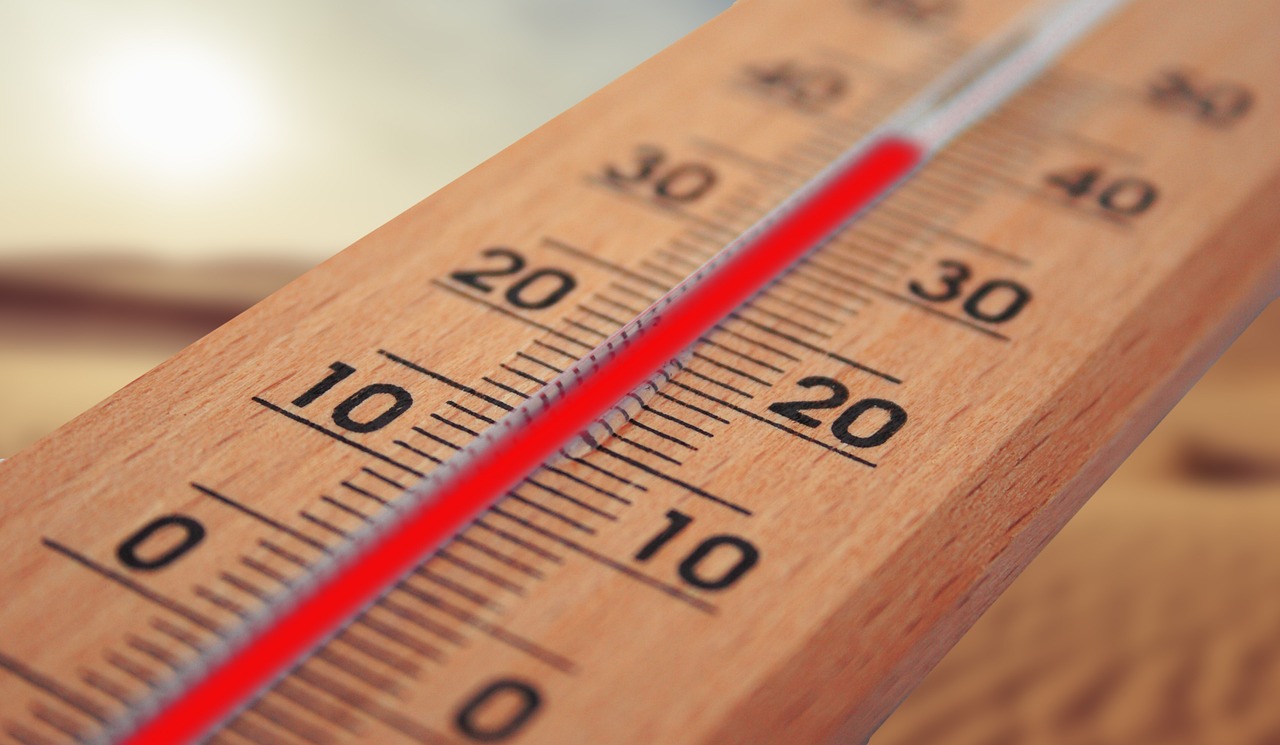
Fall Dietary Adjustments
As the vibrant colors of summer fade and the crisp air of fall sets in, it’s time to rethink your pet's diet. Just like us, our furry friends have different nutritional needs as the seasons change. The cooler temperatures can affect their metabolism and energy levels, so it’s essential to make thoughtful adjustments to their meals. Think of it as preparing your pet for a cozy autumn, where hearty meals can provide the warmth and energy they need to thrive.
During fall, pets often become less active as the days grow shorter and the weather gets chillier. This change in activity level can lead to weight gain if their diet isn’t adjusted accordingly. Consider incorporating more protein-rich foods into their meals, as these can help maintain their energy without leading to excess weight. For instance, lean meats like chicken or turkey can be excellent choices, providing the necessary nutrients while keeping their coats shiny and healthy.
Another fantastic addition to your pet's fall diet is root vegetables. These hearty foods are not only nutritious but also comforting. Think about including sweet potatoes, carrots, and pumpkin. Pumpkin, in particular, is a superfood for pets; it’s rich in fiber, which can aid digestion and keep your pet feeling full. Plus, it’s a delicious treat that many pets enjoy! When preparing these vegetables, make sure they’re cooked and served plain, without any added spices or seasonings that could be harmful.
To help you better understand the best fall foods for your pet, here’s a quick table summarizing some great options:
| Food Item | Benefits |
|---|---|
| Sweet Potatoes | High in vitamins A and C, fiber-rich, and great for digestion. |
| Pumpkin | Good for digestion, low in calories, and packed with nutrients. |
| Carrots | Rich in beta-carotene, promotes good vision and dental health. |
| Turkey | Lean protein source that helps maintain muscle mass. |
Don’t forget about hydration! Though it may not be as hot as summer, your pet still needs plenty of fresh water, especially if you’re incorporating more dry foods into their diet. Consider adding some moisture to their meals by mixing in a bit of low-sodium broth or offering wet food options. This can help ensure they stay hydrated and healthy throughout the fall.
Finally, as you make these dietary adjustments, keep a close eye on your pet's weight and overall health. Regular vet check-ups are crucial during this transition. If you notice any significant changes in their weight or behavior, consult your veterinarian to ensure you’re meeting their needs effectively. After all, a happy pet is a healthy pet, and with the right adjustments, you can keep them thriving through the beautiful fall season!
- What are the signs my pet needs a diet change for fall? Look for changes in energy levels, weight gain, or a shift in appetite.
- Can I feed my pet human food? Yes, but ensure it’s safe for them. Foods like pumpkin and sweet potatoes are great options!
- How often should I change my pet’s diet seasonally? It’s a good idea to reassess their diet with each season, adjusting for their activity levels and nutritional needs.
Winter Nutrition Essentials
As the temperature drops and snowflakes start to dance, our furry friends feel the chill just like we do. Winter is not just a season of snowmen and hot cocoa; it’s a time when your pet’s nutritional needs shift significantly. Providing the right nutrients during this cold season is crucial to keep them warm, energetic, and healthy.
During winter, pets often require a diet that is richer in calories and nutrients to help them maintain their body heat. Think of it like bundling up in a cozy sweater; your pet needs a little extra warmth from their food! High-quality proteins become essential, as they help build muscle and keep your pet's energy levels up. Foods like chicken, turkey, and lamb are excellent sources of protein that should be included in their winter diet.
Additionally, incorporating healthy fats is vital. Fats provide a concentrated source of energy, which is especially important when your pet is expending more energy to stay warm. Look for options such as fish oil or flaxseed oil, which can also promote a shiny coat and healthy skin. Don’t forget about hydration! Even though it’s cold outside, your pet still needs plenty of water. Make sure they have access to fresh water at all times, as hydration is key to overall health.
Here’s a quick look at some essential winter foods for your pet:
| Food Type | Benefits |
|---|---|
| High-Quality Proteins | Builds muscle and keeps energy levels high |
| Healthy Fats | Provides concentrated energy and promotes a shiny coat |
| Root Vegetables | Rich in vitamins and fiber, helps digestion |
| Warm Broths | Encourages hydration and provides warmth |
Moreover, don’t underestimate the power of warm meals. Just like we enjoy a hot bowl of soup on a chilly day, your pet will appreciate a warm meal too. Consider adding some warm broth to their kibble or serving up homemade meals that are gently heated. This can not only help with hydration but also make their meals more appealing during the colder months.
Lastly, keep an eye on your pet's weight. Winter can lead to a more sedentary lifestyle, especially if they’re not getting as much exercise due to the cold. Regularly monitor their weight and adjust their food intake as necessary. A few extra pounds can sneak up on them during this cozy season!
In summary, ensuring your pet receives the right nutrition during winter is about balancing warmth, energy, and hydration. By paying attention to their dietary needs and making thoughtful adjustments, you can help your furry friend thrive even when the weather outside is frightful.
- What should I feed my pet in winter? Focus on high-quality proteins, healthy fats, and warm meals to keep them energized and warm.
- How can I keep my pet hydrated in winter? Always provide fresh water and consider adding warm broth to their meals.
- Should I change my pet's diet as they age? Yes, older pets may have different nutritional needs, so it’s best to consult your vet.
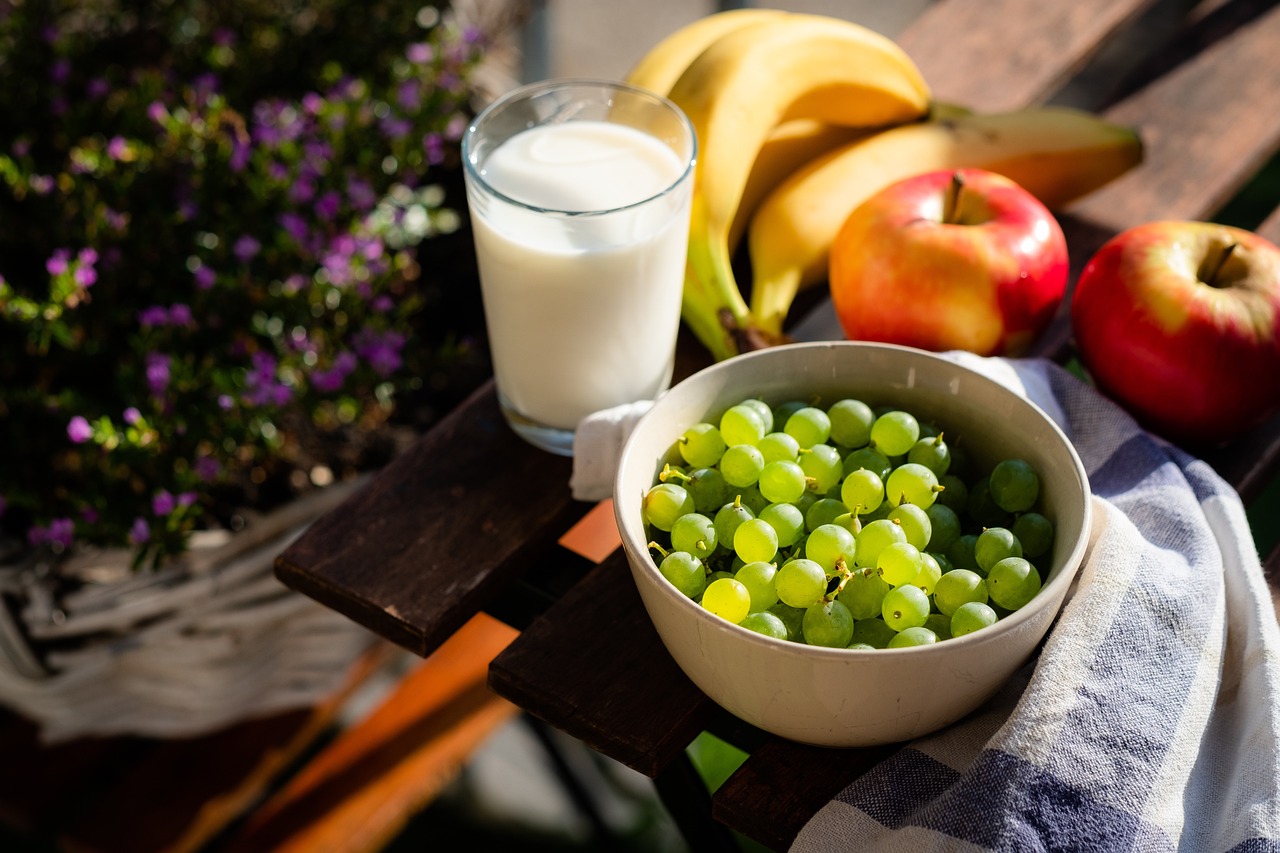
Monitoring Weight and Health
When it comes to keeping your furry friends in tip-top shape, monitoring their weight and overall health is crucial. Just like us, pets can experience fluctuations in weight due to various factors, including seasonal dietary changes, activity levels, and even their emotional state. Have you ever noticed how your pet's energy levels seem to dip or rise with the seasons? This can often be linked to their diet. By paying close attention to their weight, you can ensure they remain healthy and happy throughout the year.
One of the best ways to keep track of your pet's weight is by establishing a routine. Weigh your pet regularly—ideally, once a month. This will help you notice any significant changes over time. You can use a simple scale at home, or visit your veterinarian for a more precise measurement. If you notice your pet gaining or losing weight unexpectedly, it may be time to reassess their diet or consult with a vet. Remember, prevention is key!
In addition to weight, keeping an eye on your pet's body condition score (BCS) is essential. The BCS is a visual assessment of your pet's fat and muscle composition. You can determine this by gently feeling your pet's ribs and spine. If you can easily feel their ribs without excess fat covering, they are likely at a healthy weight. However, if you can't feel their ribs or if they have a noticeable layer of fat, it might be time to adjust their diet. The following table provides a simple guideline for assessing your pet's body condition:
| Body Condition Score (BCS) | Description |
|---|---|
| 1 | Underweight: Ribs and spine are easily visible; no fat covering. |
| 3 | Ideal Weight: Ribs are easily felt with a slight fat covering. |
| 5 | Overweight: Ribs are difficult to feel; significant fat covering. |
| 9 | Obese: Ribs are not visible; excessive fat covering; pot-bellied appearance. |
Moreover, keeping track of your pet's activity levels is just as important as monitoring their weight. Pets that are more active generally require more calories, while those that are less active may need fewer. Regular exercise not only helps maintain a healthy weight but also contributes to your pet's mental well-being. Try to incorporate daily walks, playtime, or even interactive toys to keep them engaged and active.
Lastly, don't forget to consider your pet's age, breed, and health conditions when adjusting their diet. Older pets or those with specific health issues may require specialized diets. Consulting with your veterinarian can provide tailored advice that suits your pet's unique needs. Remember, a well-balanced diet combined with regular monitoring can lead to a longer, healthier life for your beloved companion.
- How often should I weigh my pet? It's recommended to weigh your pet at least once a month to monitor any significant changes.
- What should I do if my pet is overweight? Consult your veterinarian for a tailored weight loss plan, which may include dietary adjustments and increased exercise.
- Can seasonal changes affect my pet's weight? Yes, seasonal changes can influence your pet's activity levels and dietary needs, which may impact their weight.
- How can I tell if my pet is at a healthy weight? You can assess your pet's body condition score by feeling their ribs and spine. A healthy pet should have ribs that are easily felt but not visible.
Frequently Asked Questions
- Why do my pet's dietary needs change with the seasons?
Just like us, pets experience shifts in their nutritional requirements as the seasons change. Factors such as temperature, activity levels, and even the availability of fresh ingredients can impact what your furry friend needs to stay healthy and happy. For example, in the colder months, pets may need more calories to keep warm, while in the summer, lighter meals and increased hydration are essential.
- What are some good spring foods for my pet?
Spring is a fantastic time to introduce fresh produce into your pet's diet! Foods like peas, carrots, and asparagus are not only safe but also packed with essential nutrients. Additionally, fruits like strawberries and blueberries can be a delicious treat. Just remember to wash them thoroughly and cut them into manageable pieces to avoid choking hazards.
- How can I help my pet stay cool in the summer?
Keeping your pet cool during the hot summer months is crucial! Opt for lighter meals that are easier to digest and ensure they have access to plenty of fresh water. You can also try incorporating hydrating fruits and veggies, like watermelon and cucumber, into their diet. Plus, regular walks during cooler parts of the day can help keep their energy levels balanced.
- What should I consider when adjusting my pet's diet for fall?
As the weather cools down, pets often need heartier meals to sustain their energy. Foods rich in protein and healthy fats, such as pumpkin and sweet potatoes, can be great additions. It's essential to gradually transition their diet to avoid any stomach upset, and keep an eye on their weight to ensure they're not overeating during the cozy season.
- How do I ensure my pet gets enough nutrients in winter?
Winter can be tough on pets, so focusing on warmth and energy is key. Look for high-quality, nutrient-dense foods that provide the necessary calories. Ingredients like fish oil can help keep their coat healthy and shiny, while hearty grains can offer sustained energy. Don't forget to monitor their weight, as some pets may become less active in the cold.
- How often should I monitor my pet's weight?
Regular weight checks are essential for maintaining your pet's health year-round. Aim to weigh your pet at least once a month, and keep an eye on their body condition. If you notice any significant changes, it might be a good idea to consult your vet for tailored dietary advice. Remember, a healthy pet is a happy pet!


